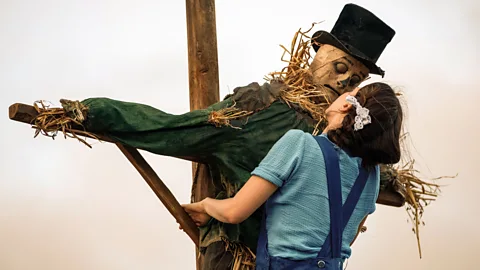Female rage: The brutal new icons of film and TV
 Christopher Moss
Christopher MossThis year, films and TV shows like Pearl and Bad Sisters are channelling female rage and questioning gendered stereotypes with their violent anti-heroines, writes Miriam Balanescu.
When, in 2017, the directorial duo Scott McGehee and David Siegel announced their plans to create a female version of Lord of the Flies, they were roundly mocked on social media. William Golding's 1954 novel famously features a group of boys who descend into barbarism after being stranded on an island. Critics of McGehee and Siegel's project argued that girls would never exhibit the same savagery in such a situation. One sneered, "What are they going to do? Collaborate to death">window._taboola = window._taboola || []; _taboola.push({ mode: 'alternating-thumbnails-a', container: 'taboola-below-article', placement: 'Below Article', target_type: 'mix' });
